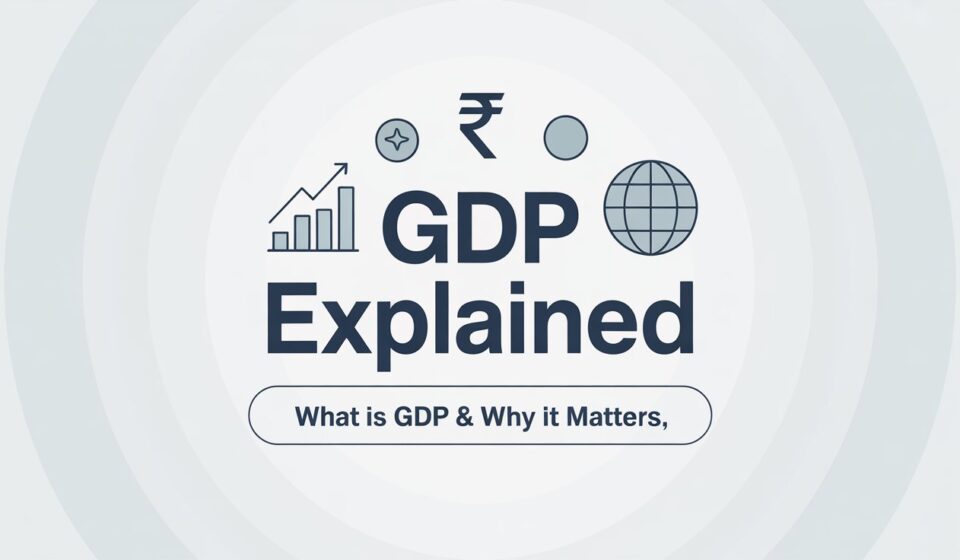
GDP Explained: What is GDP, How It Works & Why It Matters in 2025
Introduction
Why GDP Dominates Every Economic Conversation
Ever wondered why every Union Budget discussion or stock market rally always includes the term GDP?In 2024, India’s GDP grew by 8.2%, making it the fastest growing economy in the world. But what is GDP, and why does this number shake up global investors? Let’s understand.
Table Of Content
- Introduction
- Why GDP Dominates Every Economic Conversation
- What is GDP?
- How is GDP Calculated?
- Why GDP Matters for You and Me
- Pros & Cons of GDP as a Metric
- Actionable Takeaways
- FAQ on GDP
- What is the full form of GDP?
- Which country has the highest GDP?
- How does GDP affect stock markets?
- What is India’s GDP in 2025?
- Conclusion
What is GDP?
Gross Domestic Product (GDP) is the total monetary value of all goods and services produced within a country’s borders during a specific time period – usually a year or a quarter. Think of it as a country’s financial report card.
For example, when India produces smartphones in Noida, exports software from Bengaluru, or grows wheat in Punjab, the total value of these goods and services contributes to GDP.
How is GDP Calculated?
Economists usually measure GDP using three main approaches:
- Production Approach – The total value of goods and services.
- Expenditure Approach – GDP = C + I + G + (X − M)
- C: Consumer spending
- I: Investments by businesses
- G: Government spending
- (X − M): Exports minus imports
- Income Approach – Sum of wages, rents, interests, and profits.
Mini Case Study:
When the Indian government invests in highways (G), or Tata invests in EV manufacturing (I), these directly add to India’s GDP.
Why GDP Matters for You and Me
- Stock Markets: Rising GDP often leads to higher corporate profits, boosting stock prices.
- Jobs & Incomes: A growing GDP means companies expand, creating employment.
- Investment Planning: Global investors pour money into high-growth economies.
Did you know? When India’s GDP growth forecast improves, foreign direct investments (FDIs) from firms like Apple or Tesla surge.
Pros & Cons of GDP as a Metric
Pros:
- Standardized measure for economic performance.
- Helps compare countries globally.
- Guides government policy and interest rates.
Cons:
- Ignores income inequality.
- Doesn’t reflect environmental damage.
- Misses the quality of life factor.
Actionable Takeaways
- Track quarterly GDP reports on RBI and MOSPI websites to understand economic trends.
- Use GDP data as a signal for stock investments – a rising GDP often means strong corporate earnings.
- Compare GDP growth rates before investing in mutual funds or ETFs with exposure to emerging markets.
FAQ on GDP
What is the full form of GDP?
Gross Domestic Product.
Which country has the highest GDP?
As of 2024, the United States tops the list with a GDP of around $27 trillion.
How does GDP affect stock markets?
Higher GDP growth indicates economic strength, often leading to a bullish stock market.
What is India’s GDP in 2025?
According to RBI projections, India’s GDP is expected to grow by 7% in FY25.
Conclusion
GDP isn’t just an economic term – it’s the heartbeat of a nation’s financial health. Whether you’re an investor, entrepreneur, or a student, understanding GDP helps you make smarter financial decisions.
Ready to learn more? Check out our guides on Income Tax and GST.



